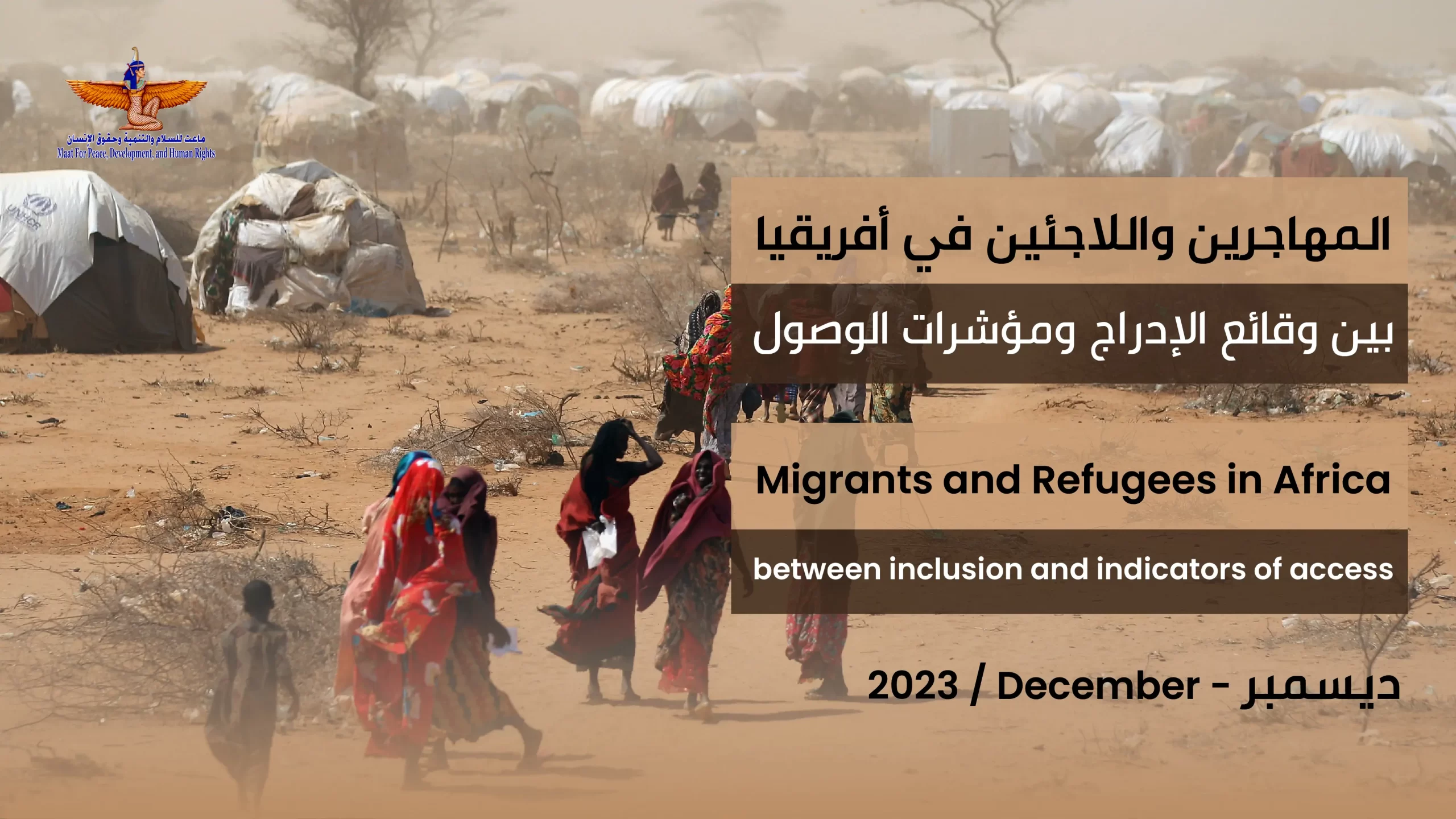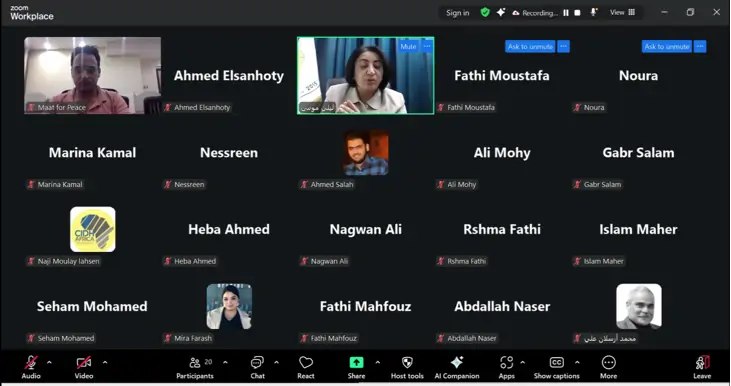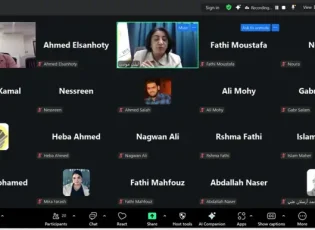Maat: Pace of waves of asylum, migration and displacement has accelerated to an unprecedented extent in Africa
“Okeil”: We call for further between governments and the African Commission to govern the waves of migration and asylum
“Gharib”: There is a large gap between law and implementation in attempts to include refugees and migrants in Ethiopia
On the sidelines of International Migrants Day, which falls on December 18 of each year, and in line with its interest in improving the conditions of vulnerable and marginalized groups, Maat for Peace, Development, and Human Rights recently released a study titled "Migrants and Refugees in Africa: Between Inclusion and Access Indicators." This study aims to shed light on the living realities of African migrants and refugees, evaluate their inclusion within national contexts by reflecting on relevant updated statistics in Africa, review the frameworks for their inclusion, internationally and in Africa, and monitor and analyze indicators of their access to economic and social services within some countries. The study concludes with a set of recommendations in this regard.
The study highlights the escalating waves of migration and displacement in Africa, describing the continent as a "moving continent." It reveals that 40 million Africans are part of migrant groups, while 44 million are counted as refugees and displaced persons. The study also examines the internal flows of migration within Africa, with approximately 80% of the migration phenomenon occurring within the continent. Notably, around 21 million documented Africans reside in other African countries, primarily in West, South, and East Africa, as opposed to North Africa and the Maghreb region.
Ayman Okeil, an international human rights expert and Chairman of Maat, emphasized the importance of including migrants and refugees in the social and economic systems of host countries. Okeil highlighted a resolution issued by the African Commission on Human and Peoples' Rights in August, which urges African nations to integrate refugees, asylum seekers, internally displaced persons, and stateless individuals into their national systems, services, and opportunities.
Okeil further called for strengthened collaboration between the African Commission and national governments, suggesting the removal of restrictions hindering the integration of migrants and refugees, support for African decisions on integration, and adoption of legislative and administrative measures to ensure the well-being of all migrants and refugees in Africa.
Sayed Gharib, a researcher at Maat’s Sustainable Development Unit, focused on Ethiopia's efforts to include migrants and refugees in its national systems. Despite Ethiopia's commitment to inclusion, Gharib noted a significant gap between promises and actions. For example, Ethiopia has been unable to implement the "outside the camps" policy since 2010, and refugees have not received work permits or practical support to integrate them into national plans. Gharib urged the Ethiopian government to fulfill its human rights obligations by updating its legal and legislative framework and relevant national plans in line with the African Commission's decision on inclusion.
In conclusion, Maat’s study sheds light on the realities of migration and inclusion in Africa. It calls for enhanced cooperation between governments and the African Commission to effectively govern migration and asylum. Furthermore, it emphasizes the need for countries like Ethiopia to bridge the gap between their legal commitments and actual implementation to ensure successful integration of migrants and refugees into society.
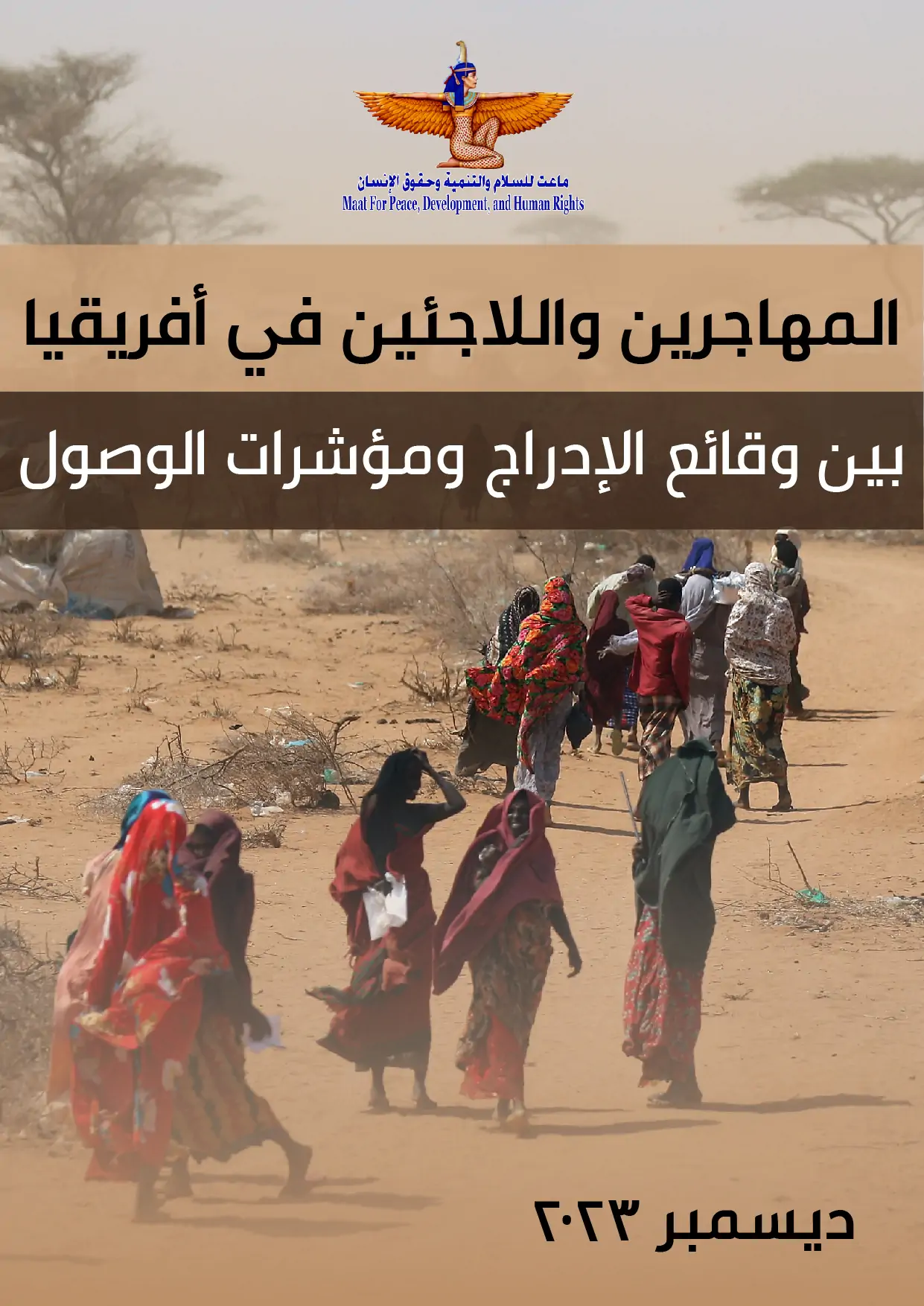 |
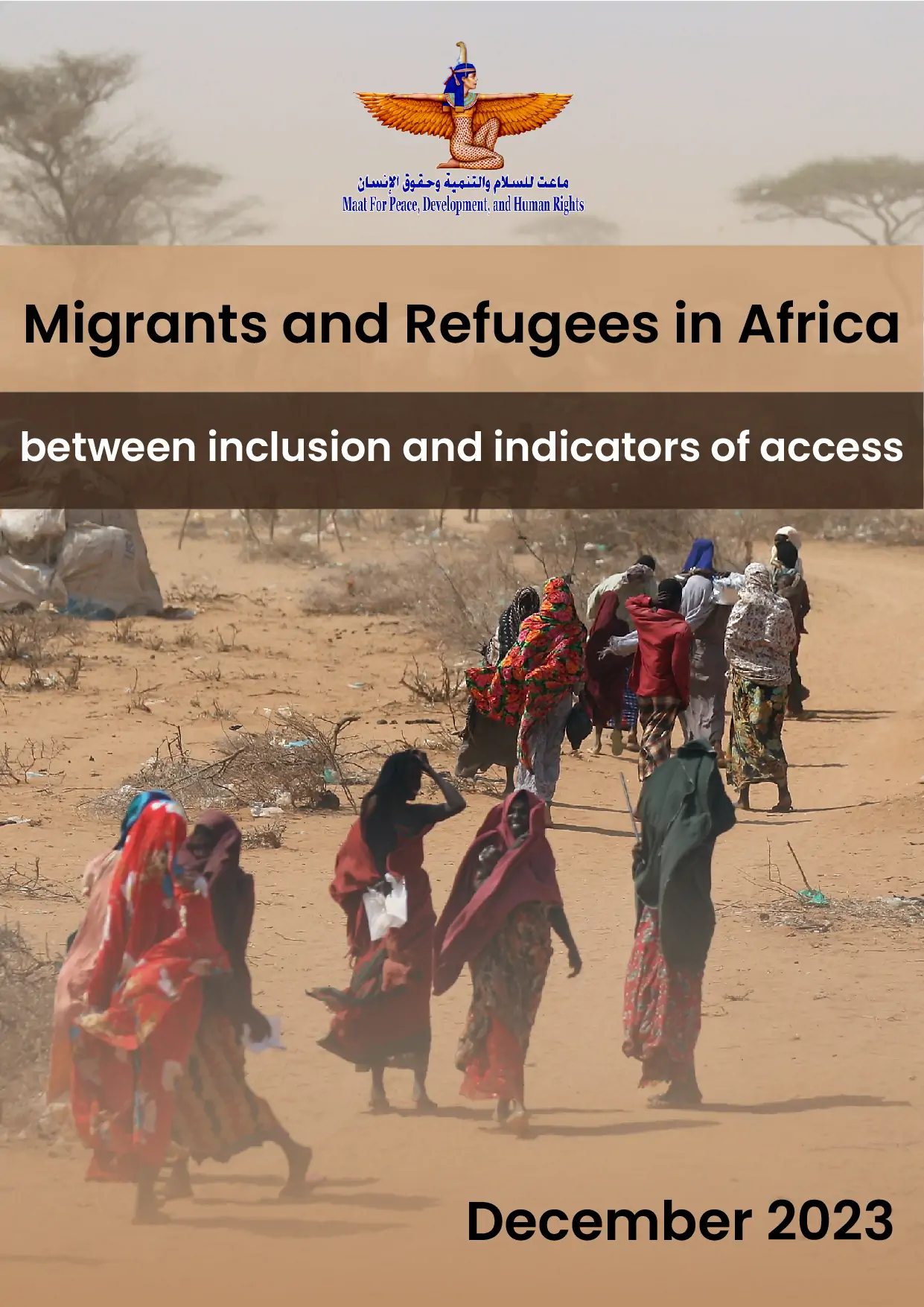 |
shortlink: https://maatpeace.org/en/?p=41133


